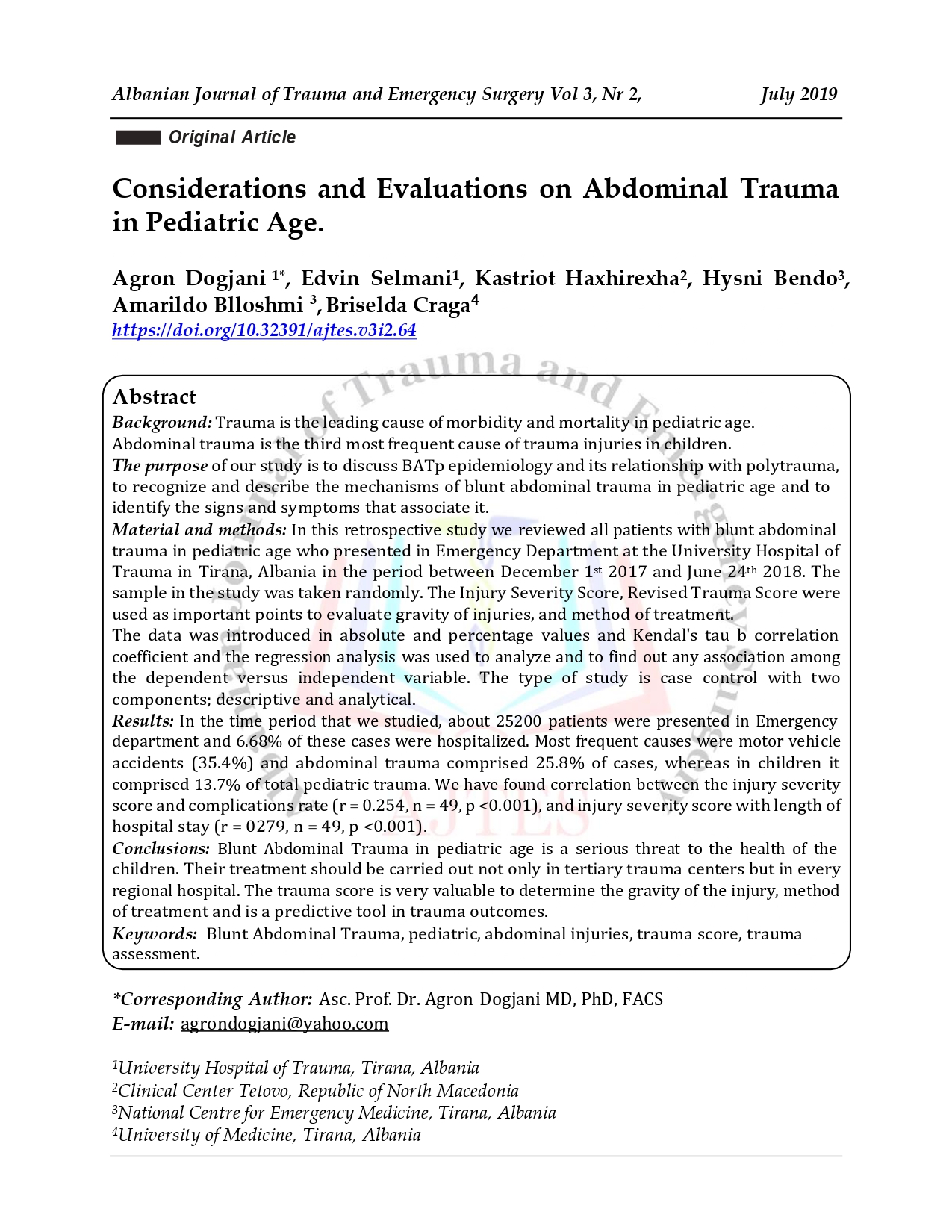Background: Trauma is the leading cause of morbidity and mortality in the pediatric age. Abdominal trauma is the third most frequent cause of trauma injuries in children.
The purpose of our study is to discuss BATp epidemiology and its relationship with polytrauma, to recognize and describe the mechanisms of blunt abdominal trauma in the pediatric age, and identify the signs and symptoms that associate with it.
Material and methods: In this retrospective study we reviewed all patients with blunt abdominal trauma of pediatric age who presented in the Emergency Department at the University Hospital of Trauma in Tirana, Albania in the period between 1st December 2017 to 24th June 2018. The sample in the study was taken randomly. The Injury Severity Score and Revised Trauma Score were used as important points to evaluate the gravity of injuries, and the method of treatment.
The data was introduced in absolute and percentage values and Kendal's tau b correlation coefficient and the regression analysis was used to analyze and find out any association among the dependent versus independent variables. The type of study is case-control with two components; descriptive and analytical.
Results: In the time period that we studied, about 25200 patients were presented in the Emergency Department and 6.68% of these cases were hospitalized. The most frequent causes were motor vehicle accidents (35.4%) and abdominal trauma comprised 25.8% of cases, whereas in children it comprised 13.7% of total pediatric trauma. We have found correlation between the injury severity score and complications rate (r = 0.254, n = 49, p <0.001), and injury severity score with length of hospital stay (r = 0279, n = 49, p <0.001).
Conclusions: Blunt Abdominal Trauma in the pediatric age is a serious threat to the health of children. Their treatment should be carried out not only in tertiary trauma centers but in every regional hospital. The trauma score is very valuable to determine the gravity of the injury, and method of treatment and is a predictive tool in trauma outcomes.
Keywords: Blunt Abdominal Trauma, pediatric, abdominal injuries, trauma score, trauma assessment.

